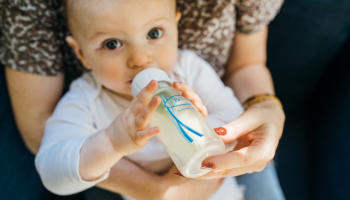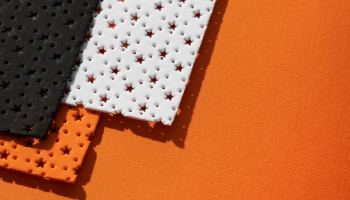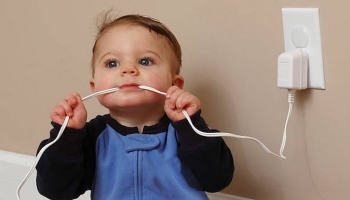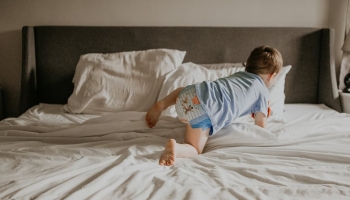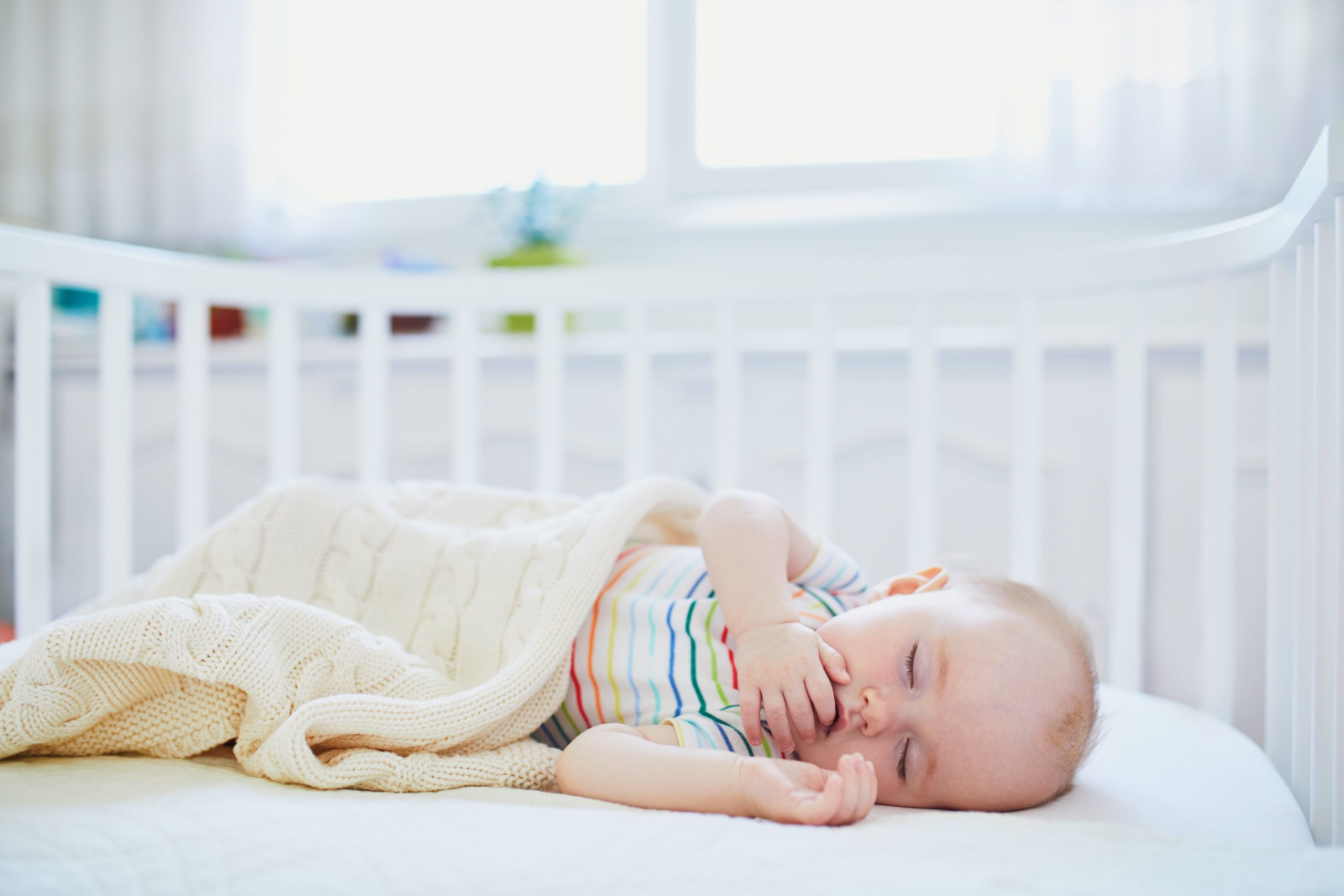
As parents, ensuring the safety and well-being of our little ones is of utmost importance. One crucial aspect of creating a safe sleep environment for infants is knowing when to lower the crib. As they grow and develop, babies reach various milestones that necessitate adjustments to their sleeping arrangements. In this comprehensive guide, we will explore the factors determining when to lower the crib, discuss the recommended height for different stages, and provide valuable insights for parents to ensure a secure and comfortable sleeping space for their growing child. Let’s delve into the details of this essential topic to ensure your little one’s safety and peaceful slumber.
When To Lower Crib And At What Height:
Determining when to lower the crib involves considering factors such as your baby’s age, developmental milestones, and physical capabilities. While there are no hard and fast rules, a general guideline is to lower the crib when your child shows increased mobility or attempts to climb out.
The first adjustment is typically made when your baby transitions from a bassinet or cradle to a crib, usually around 3 to 6 months of age. At this stage, the crib should be set at its highest position to make it easier for parents to access the baby. The most elevated crib position ensures you can safely lay down and pick up your child without straining your back.
As your baby gains strength, you’ll notice increased mobility, such as rolling over, pushing up, or attempting to sit up. When your little one starts pulling up to a standing position or shows signs of trying to climb out of the crib, it’s time to lower the mattress to a lower position. This prevents the risk of falls and keeps your child safe.
Most cribs have multiple mattress height settings, usually three or more. Lowering the baby’s crib mattress to the middle position is typically recommended when your baby becomes more active and starts pulling up. This position balances accessibility for parents and safety for the child.
Once your baby becomes more proficient in standing and shows a higher likelihood of climbing out of the crib, it is advisable to lower the baby’s crib mattress to its lowest position. This setting provides the most diminutive height and reduces the risk of accidents or injuries associated with climbing over the crib rails.
Remember that each child develops at their own pace, and you should adjust based on your baby’s needs and abilities. Regularly check the baby’s crib mattress height and make changes as necessary to ensure your child’s safety throughout their early years.
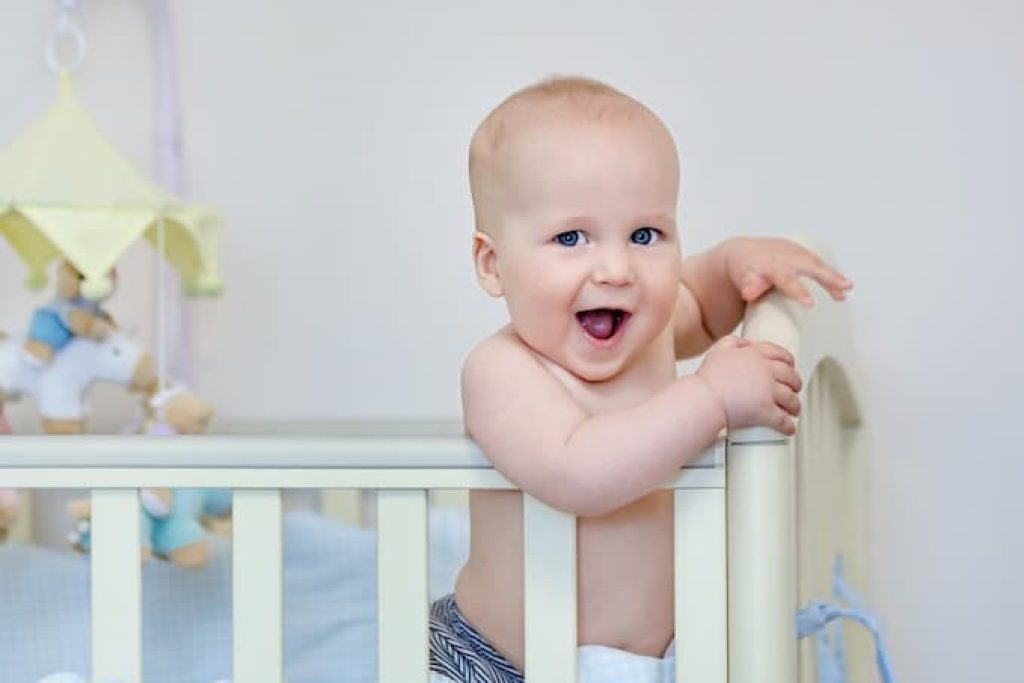
Crib Height Limit
Highest Crib Setting
The highest crib mattress setting is recommended for newborns and younger infants. You’ll often use this setting when you initially move your baby to a crib. It lessens the likelihood that the infant will unintentionally tumble out of the crib or try to climb the railings.
It’s undoubtedly the simplest crib mattress height to place a sleeping infant in. The highest crib setting is appropriate for most newborns under five months. The mattress should be at least 26 inches below the side panel in this position, according to the A.A.P. This is the option you want to utilize if you’re moving from a bedside bassinet.
Middle Crib Setting
The middle crib mattress setting is typically used when your baby reaches a certain level of mobility and starts showing signs of sitting up independently. This usually occurs around the age of 5-8 months. At this stage, your baby may begin pulling themselves to a sitting position using the crib rails or attempting to stand.
Setting the crib mattress height to the middle position ensures that your baby is safely contained within the crib while allowing them to practice their newfound sitting skills. This setting helps prevent falls and provides a secure environment for your baby to explore their surroundings from a seated position.
Once your baby becomes proficient at sitting and starts attempting to pull themselves up to a standing position, it’s time to lower your baby’s crib to the lowest setting. This transition usually occurs around 8-10 months, depending on your baby’s development.
Lowest Crib Setting
The lowest crib mattress setting is typically used when your baby starts sitting up independently or attempting to pull themselves up to a standing position. This transition usually occurs around 8-10 months of age. Setting the crib to its lowest position ensures your baby remains secure inside the crib and minimizes the risk of falls or climbing over the railing. Regularly monitor your baby’s development and adjust the crib height to maintain a safe sleep environment.
Mattress On The Floor
Setting the mattress on the floor, or transitioning to a floor bed, is an alternative sleeping arrangement for babies and young children.
The floor bed allows for greater freedom of movement and independence for the child. It promotes self-exploration, encourages gross motor development, and provides a safe space for the child to learn to navigate in and out of bed. It can also be beneficial for fostering a healthy sleep environment and developing a positive sleep routine.
Recommended Crib Height By Age
As for the recommended crib height by age, guidelines can vary, but here is a general overview:
Newborn to 3-4 months: The highest crib setting is typically recommended for easy access to the baby and to prevent bending over too far.
4-6 months: Some babies may start rolling over at this age, and it’s a good time to lower the crib sets to ensure their safety.
6-8 months: As babies gain more mobility, including sitting up independently, transitioning to the middle crib setting may be appropriate.
8-10 months and onwards: Once babies start pulling themselves up to a standing position or attempting to climb out of the crib, it’s time to lower the crib to the lowest setting or consider transitioning to a floor bed.
Remember, these are general guidelines, and individual factors such as your baby’s development and safety should be the primary considerations when determining the appropriate crib height or transitioning to a floor bed.
Why Lower The Crib Mattress?
Lowering the crib mattress is essential for several reasons:
1. Safety: Lowering the crib mattress reduces the risk of falls or accidents as your baby becomes more mobile. Once babies start rolling over, sitting up independently, or attempting to stand, they may be able to climb or fall out of the crib if the mattress is set too high. Lowering the mattress ensures that the crib walls remain a safe boundary, preventing the baby from climbing over and potentially getting injured. It helps to keep the baby safe.
2. Preventing escapes: As babies grow and become more curious, they may develop the ability to leverage higher crib settings to climb or escape from the crib. Lowering the mattress helps prevent such escapes and keeps your baby secure within the crib.
3. Developmental milestones: Lowering the crib mattress aligns with your baby’s developmental milestones. As babies start sitting up and pulling themselves up to a standing position, having the bed in a lower setting allows them to practice these skills safely within the confines of the crib.
4. Easy access and convenience: Lowering the crib mattress makes it easier for parents or caregivers to lift, place, or pick up the baby from the crib. The mattress at an appropriate height ensures you can comfortably and safely reach your baby without straining your back or arms.
How To Lower The Crib Mattress?
To make a crib mattress height adjustment, follow these general steps:
1. Check the crib manual: Refer to the manufacturer’s instructions for your specific crib model. The manual should guide adjusting the crib mattress height and any necessary steps or tools.
2. Remove the mattress: Remove it from the crib and set it aside in a safe place.
3. Locate the adjustment mechanism: Look for the tool to change the crib mattress height. This can vary depending on the crib design. Standard instruments include brackets, hooks, or screws that secure the mattress support platform.
4. Adjust the mattress support platform: Depending on the crib design, you may need to unscrew or release the fasteners holding the mattress support platform in place. Carefully lower the platform to the desired height, ensuring it is securely locked into position.
5. Replace the mattress: Return it to the crib, ensuring it fits snugly and securely. Ensure the mattress is aligned with the crib edges and corners and there are no gaps between the mattress and the crib walls.
Always consult the specific instructions provided by the crib manufacturer, as the process may differ based on the crib model.
How to lower crib mattress height to the floor?
To lower the crib mattress to the floor, remove the mattress and locate the adjustment mechanism on the crib. Adjust the mattress support platform by unscrewing or releasing fasteners, lowering it to its lowest setting, and resting it on the floor.
Double-check stability, replace the mattress snugly, and ensure no gaps. Test the height to confirm it is at the floor level, providing a safe sleeping surface for your baby.
Crib safety – Tips for safe crib sleeping
Crib safety is of utmost importance as it plays a vital role in ensuring your baby’s well-being during sleep. Here are some safety tips when adjusting crib mattresses:
Tip #1
Use a firm and properly fitting mattress. A firm mattress reduces the risk of suffocation and provides optimal support for your baby’s developing body. Ensure that the mattress fits snugly into the crib, leaving no gaps between the mattress and the crib walls.
Tip #2
Keep the crib free from hazards: Ensure that the crib is free from any potential hazards that could pose a risk to your baby. Remove any pillows, blankets, stuffed animals, or other loose bedding from the crib, as these can increase the risk of suffocation or choking.
Tip #3
Regularly inspect the crib for safety: Conduct regular checks to ensure it remains in good condition and meets safety standards. Inspect the crib for loose or broken parts, sharp edges, or splintered wood. Check that all hardware, such as screws or brackets, is securely fastened.
What Should Go Inside The Crib With A Baby?
When it comes to what should go inside the crib with a baby, prioritize safety by keeping it minimal make sure the baby’s crib is clear. Use a firm mattress with a fitted crib sheet. Consider using a sleep sack or wearable blanket instead of loose blankets.
You can place a few pacifiers within reach, but avoid attaching them to strings. Avoid placing pillows, blankets, stuffed animals, or bumper pads in the crib, as they increase the risk of suffocation or entrapment.
Remove any loose or hanging items like strings or toys with long straps. Avoid using positioners, crib bumpers, pillows, or wedges. Create a safe sleep environment for your baby to reduce the risk of accidents.
How To Put A Baby Into A Lowered Crib
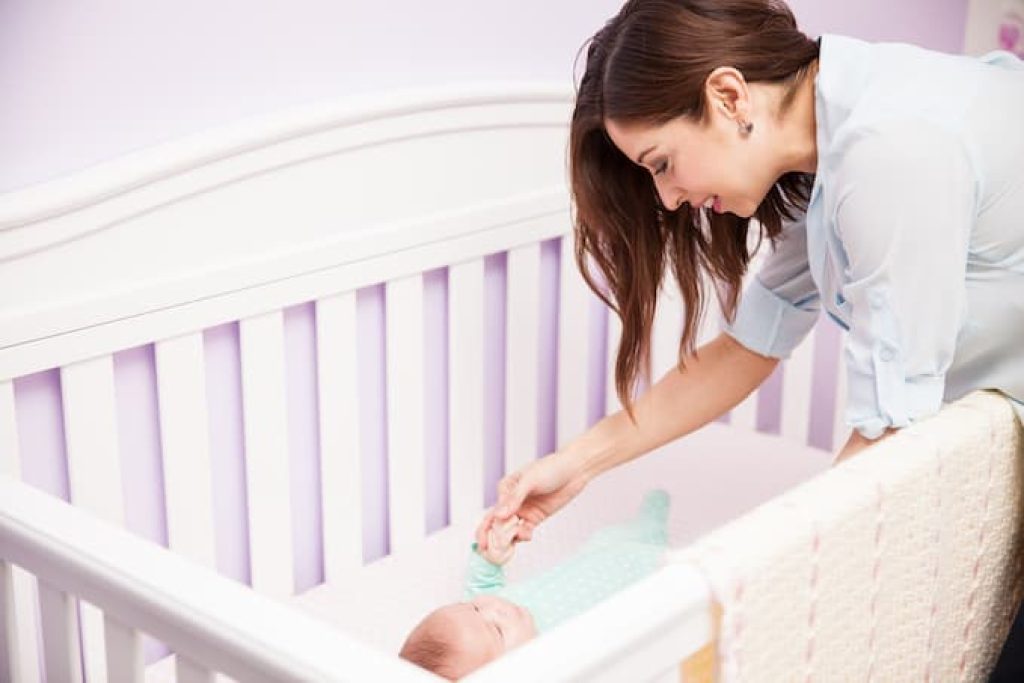
When putting a baby into a lowered crib, follow these steps for a safe and gentle transition:
1. Approach the crib: Stand next to the crib and ensure the baby’s mattress is appropriate for your baby’s development.
2. Position yourself: Stand with one foot slightly before the other, creating a stable stance. Keep your arms free and ready to hold the baby securely.
3. Hold the baby: With one hand supporting the baby’s head and neck and the other keeping its bottom, carefully lift the baby towards your chest.
4. Lower the baby: Slowly and gently lower the baby into the crib, ensuring their back touches the mattress first. Keep supporting the head and neck until they are fully settled.
5. Release your hold: Gradually release your hold on the baby, ensuring they are comfortable and positioned correctly on the mattress.
6. Step back and observe: Step back from the crib and observe to ensure that the baby is safe, comfortable, and not in any uncomfortable or compromising position.
Remember to never leave a baby unattended in the crib, even briefly. Always monitor them to ensure their safety and well-being.
When To Transition From Crib To A Toddler Mattress
The transition from a crib to a toddler bed typically occurs between 2 and 3 years old.
Signs that your child may be ready include climbing out of the crib rail, showing interest in a big-kid bed, or needing more space.
Frequently Asked Questions
Why should babies sleep at the bottom of the crib?
Place your infant at the bottom of the crib to minimize the risk of falls and climbing out.
When can babies sit on their own?
Babies typically start sitting independently between 4 and 7 months of age, although the timeline can vary.
Is a 14-month-old too tall for a crib?
This may occur for some newborns as early as eight months, while it may take closer to 12 months for others. Once your child reaches toddlerhood at two or grows 36 inches tall, they are not advised to sleep in a crib. Even in the lowest setting, a crib might no longer be suitable.
Conclusion
In conclusion, it is essential to consider your child’s specific needs and developmental milestones when it comes to crib usage. Follow recommended guidelines for crib height adjustments, prioritize crib safety, and monitor your child’s readiness for transitions such as moving to a toddler bed. Always refer to the manufacturer’s instructions for proper usage and safety.



